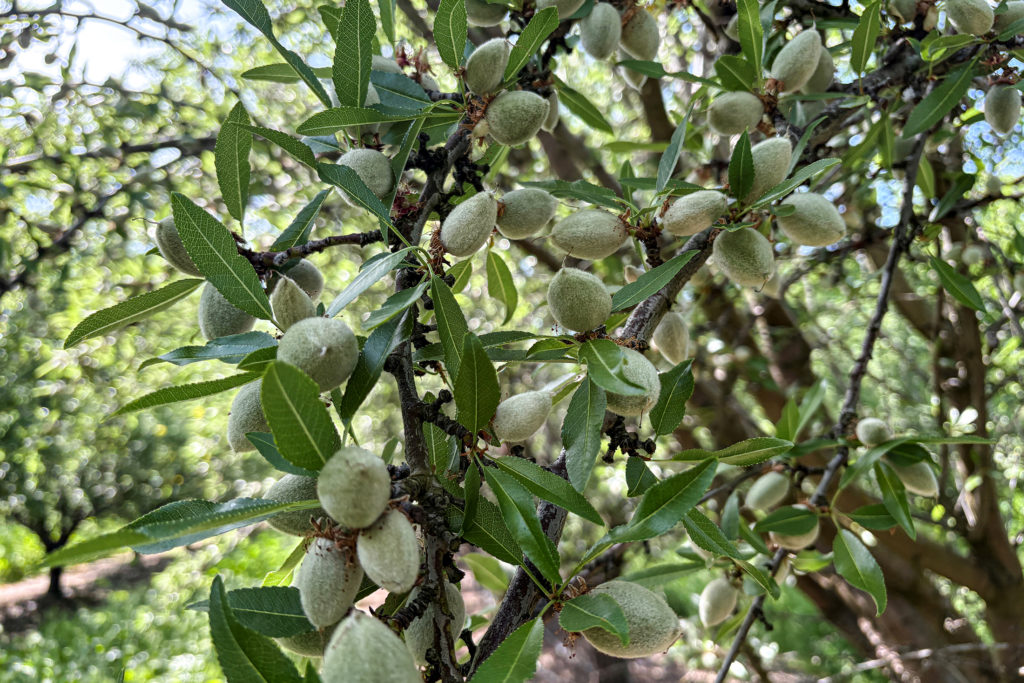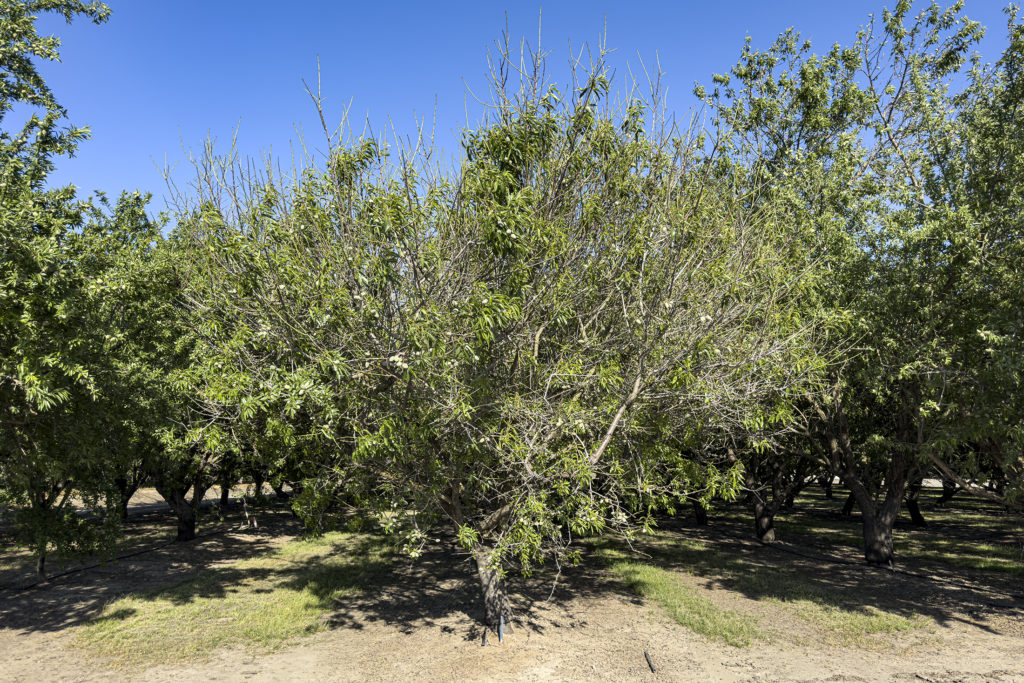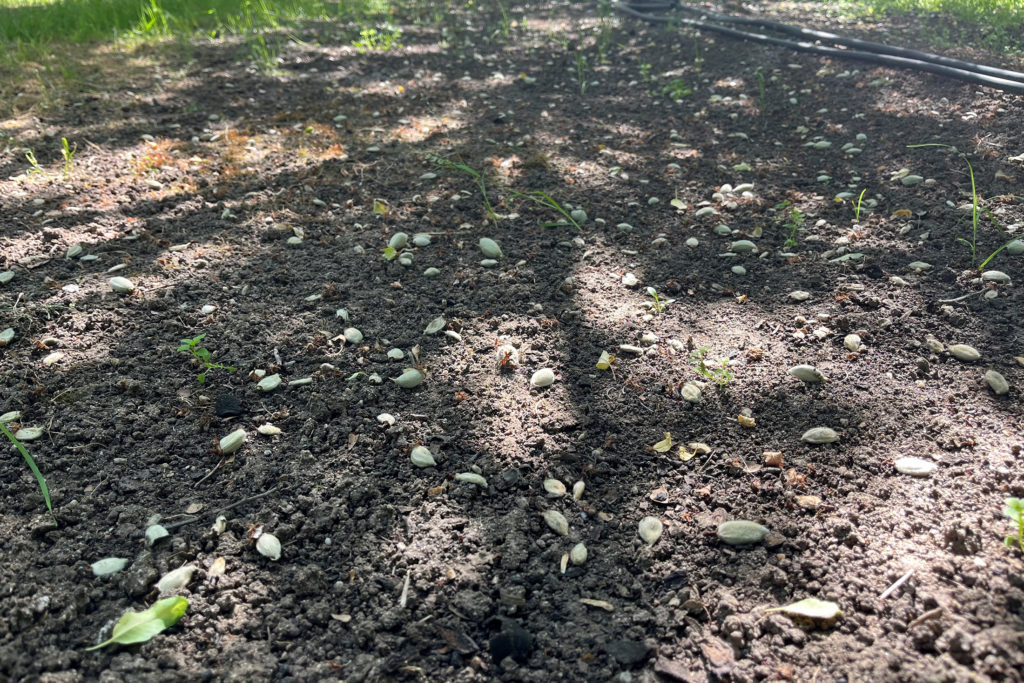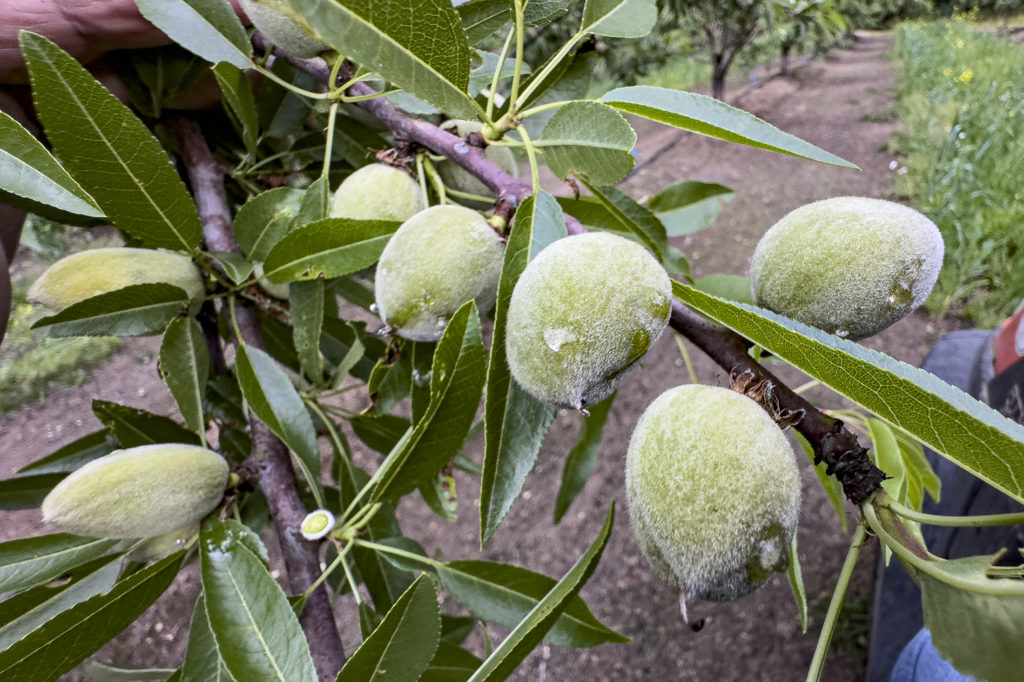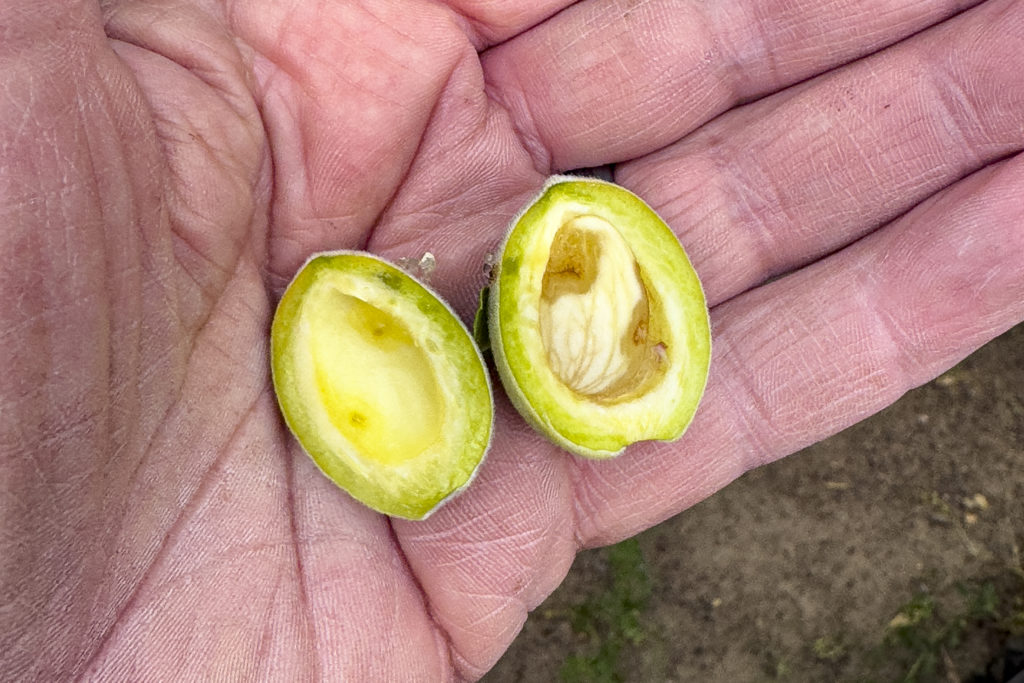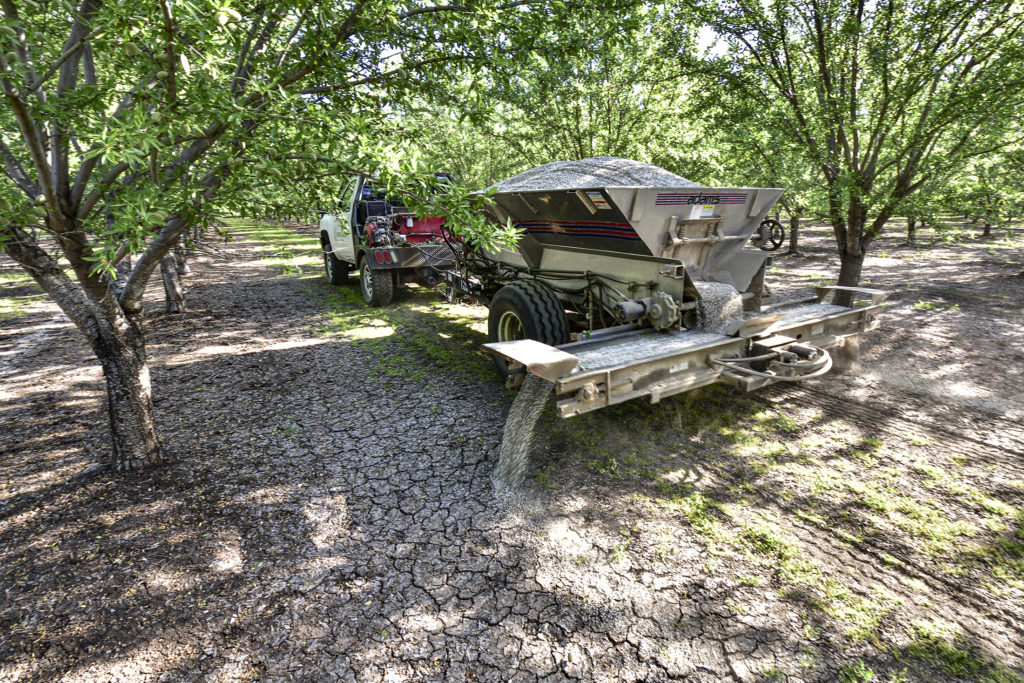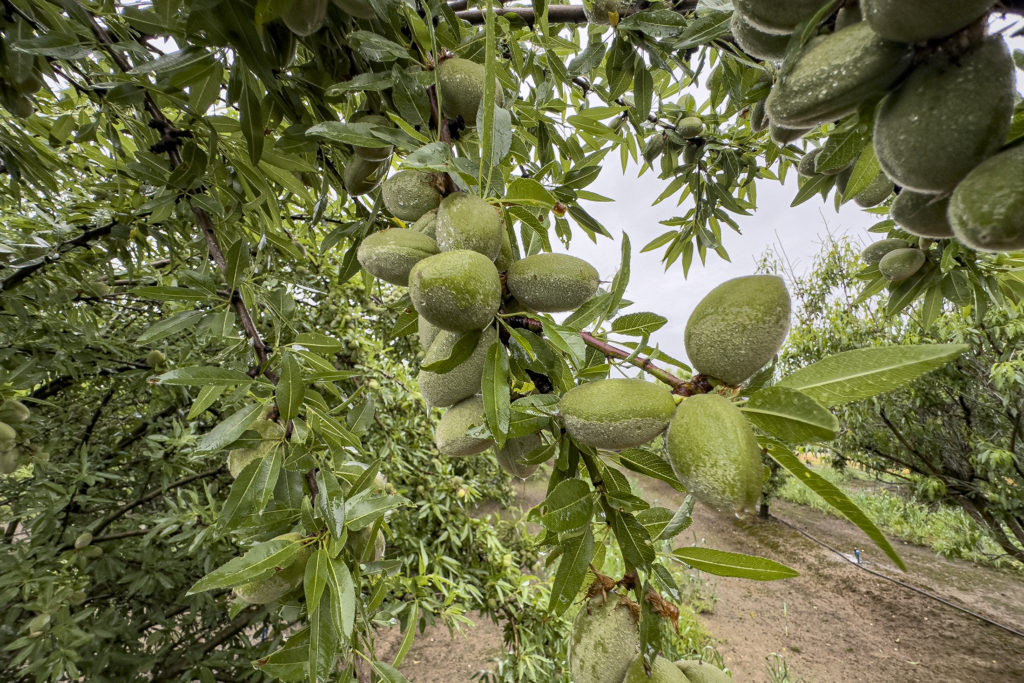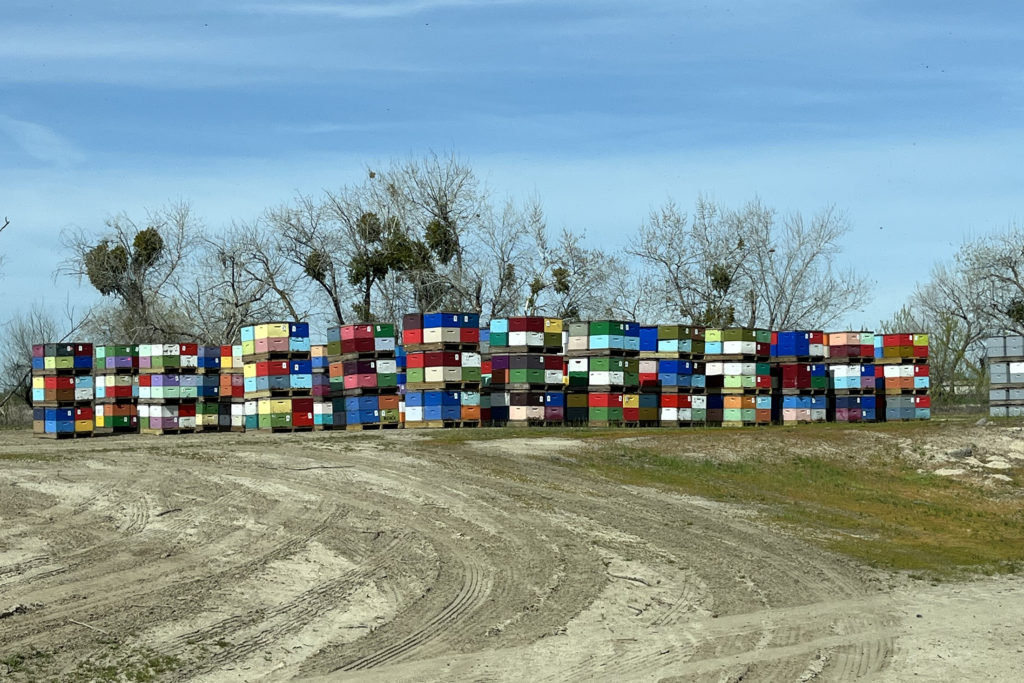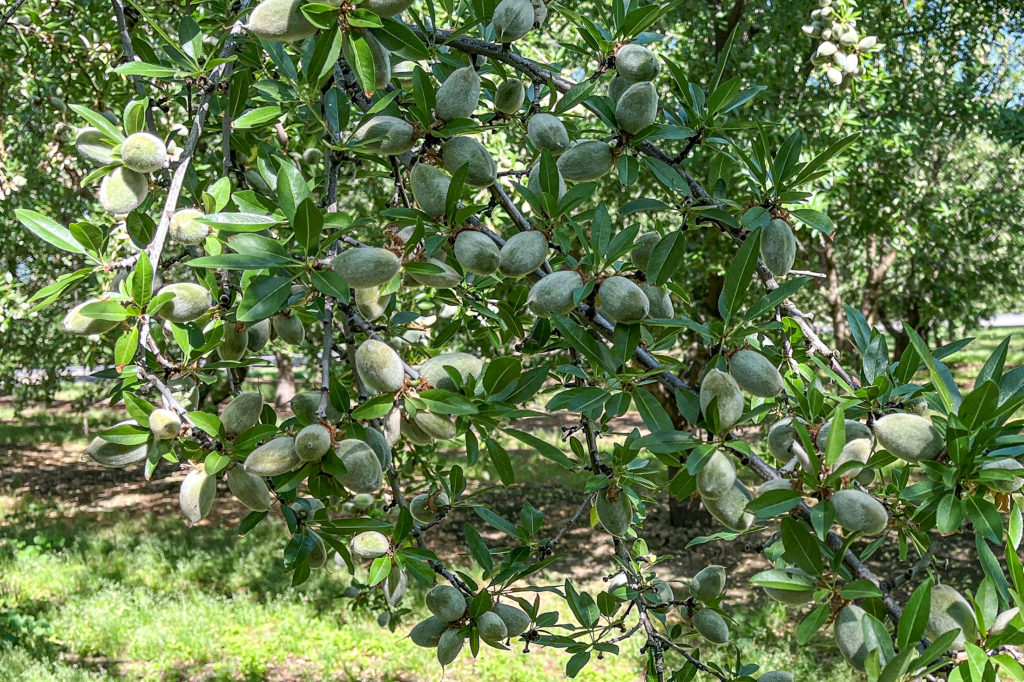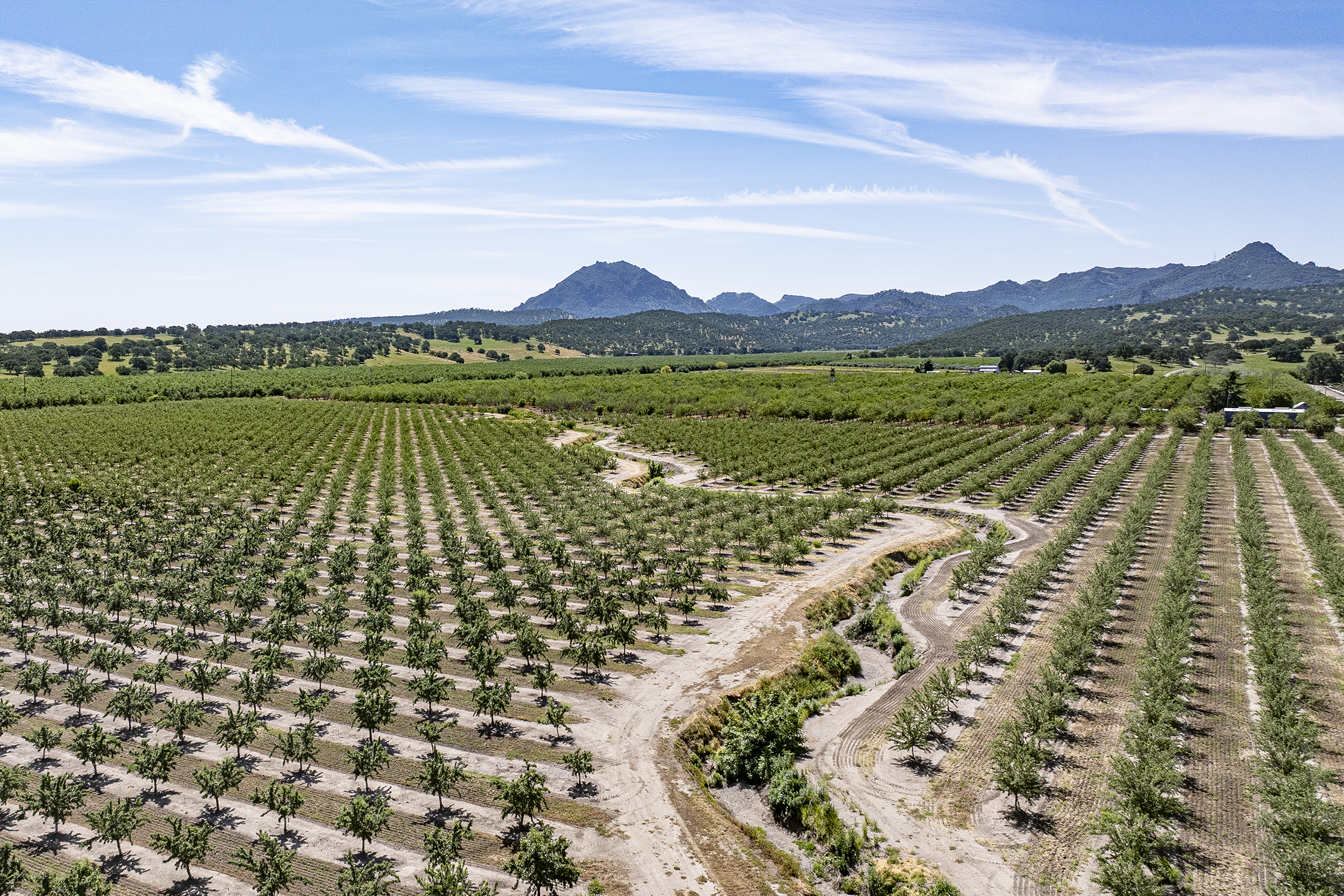
This report covers the conditions and activities observed from March 31 to April 27, 2025. The next report is scheduled for Monday, June 2, 2025. In the event of any significant occurrences prior to that date, this site will be updated as soon as possible.
California’s central valley experienced wide ranging temperatures during April. Daily maximum temperatures during both the opening and closing days of the period were reported in the upper 50’s to lower 60’s throughout the central valley. Showery conditions accompanied the cooler conditions in all areas, from trace amounts to as much as 0.5 inch of rain reported in the opening days of the period. Skies cleared quickly after a few days allowing daytime temperatures to rise dramatically, reaching near record values in the mid and upper 80’s at mid-month. Cloudy skies returned to the state in the final days of the period with widespread showers dropping up to an inch of rain over the orchards, eliminating the need for irrigation in orchards receiving the greatest amount of rain. Morning lows exhibited a bit more stability with temperatures reported predominately in the mid-40’s to lower 50’s.
Observers are reporting that crop development has progressed well during the period, under the influence of generally warm conditions. The differentiation process noted in our previous report continued during April in all areas of the central valley. This “second shed” has cast nuts that the trees are unable to support to maturity to the ground in nearly all varieties. Observers noted the heaviest shedding in Monterey, Butte, Padre, and California types, with shedding also observed in Independence and Nonpareil.
Observers are reporting signs of non-infectious bud failure in the Nonpareil, as well as significant expression in the Carmel variety, which is more prone to the problem. Expression of the genetic disorder is exacerbated by stress, typically heat and/or water stress and, no doubt, the result of the adverse temperatures experienced last summer. In addition to severely impacting yields, bud failure also delays bloom and nut maturity.
With local irrigation districts now making water available, growers began irrigating their orchards in all areas. Taking advantage of the greater amount of rainfall received in the northern half of the central valley, growers made their first significant irrigations at mid-month. Those in the southern region, which received less rainfall, began their irrigations in March, where water was available. As noted in our previous report, growers needing to apply fertilizer materials through their irrigation system had provided enough water to complete the application in late March, then returned to irrigate as temperatures rose and the orchard’s water requirement warranted irrigation. As irrigations increased, additional fertilizer applications have also been made. As seen in the photo accompanying this report, some have utilized granular fertilizers to meet specific needs for their orchards.
Pest management efforts became more diversified during the period as growers shifted their attention from bloom-time diseases to foliar issues and insect pests. Devices used to emit pheromones for mating disruption of navel orangeworm (NOW) have been placed within the orchards, as have traps used to monitor the insect’s lifecycle. Growers and their Pest Control Advisors, have been monitoring orchards for signs of leaffooted plant bugs and stink bugs, together known as “plant bugs.” Formerly an occasional pest that may become problematic once every two or three years, plant bugs have become an annual pest and can wreak havoc on the developing nuts. These insects feed by probing the nut with their piercing-sucking mouthparts. Feeding at this time of year results in nut death and crop loss. Feeding later in the season after kernel hardening resulting in brown spot, rendering the nut as a reject. These insects are very hard to find within the orchard, and trapping options are limited. But the clear gum oozing from the hulls produced by their feeding can be easily noticed on nuts within the canopy and may be seen in the photos accompanying this report. Plant bugs can cause significant damage and losses in a relatively short time. After observing damage and/or the presence of the insect, some growers have opted to treat using materials that are also able to reduce NOW larvae as adult moths lay their eggs on any mummy nuts remaining in the trees. Materials used are also selected to prevent losses of beneficial insects such as six-spotted thrips, an excellent predator of web-spinning mites, which can defoliate trees later in the summer. Given the recent rainfall, most will also include material to prevent foliar fungal diseases, which must be applied prior to infection in order to be effective.
Vegetation management moved into secondary activity during the period as growers sent flail mowers into the orchards to mow growth within the orchard middles, the area between the tree rows. Those who had previously terminated cover crops also worked to reduce regrowth, while others mowed weed growth. Mowing will continue as needed throughout the summer as growers work to ensure a clean orchard floor for harvest.
Orchard removal operations continue in all areas. Observers have noted a substantial number of orchards being removed, as well as many receiving minimal to no care. These low care and abandoned orchards have created significant problems for neighboring growers over the past two years, acting as sources of NOW.
By Mel Machado
Photo Credits: Christine Ivory, Carla Youngblood, Anthony Scudder, Austin Jackson, KC Clendenin and Mel Machado

